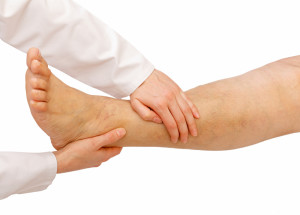What are symptoms of pulmonary hypertension?
Many of the symptoms of pulmonary arterial hypertension (PAH) are nonspecific leading to under or misdiagnosis in many patients. It is common to spend more than two years from the time symptoms present to the time of accurate diagnosis. This is very concerning since pulmonary arterial hypertension (PAH) is a progressive disease and the more advanced the disease is before treatment the worse the outcomes are for the patient. For this reason, many PAH specialists spend time and energy educating community physicians about signs and symptoms of pulmonary hypertension.
Common symptoms of pulmonary arterial hypertension (PAH) include:
 Breathlessness or dyspnea: Usually starts with shortness of breath with activities such as walking up inclines or stairs but can progress to breathlessness at rest.
Breathlessness or dyspnea: Usually starts with shortness of breath with activities such as walking up inclines or stairs but can progress to breathlessness at rest.
Chest pain: This pain can vary from feeling pressure in the chest to stabbing pain and is very individualized.
Dizziness: Feeling light headed or dizzy with activity.
Fainting: This is a verry concerning symptom that should be paid close attention. Many times the fainting happens when a pulmonary arterial hypertension (PAH) patient bends down with their head lowered to pick something up. A known pulmonary hypertension patient should always report an episode of fainting or near fainting to their PAH specialist.
Chronic fatigue: Not being able to do the same activities as previously able to do, or having to take breaks to complete usual chores such as making the bed or vacuuming the floor.
 Swelling in the ankles or edema: Fluid accumulates in the body because the heart is strained and cannot efficiently pump. The fluid generally settles in the feet, ankles, and legs as they are the most dependent part of the body but swelling can also be noticed in the abdomen and hands.
Swelling in the ankles or edema: Fluid accumulates in the body because the heart is strained and cannot efficiently pump. The fluid generally settles in the feet, ankles, and legs as they are the most dependent part of the body but swelling can also be noticed in the abdomen and hands.
Many other diseases such as congestive heart failure or diastolic heart failure have very similar symptoms of pulmonary hypertension. Diagnosing pulmonary arterial hypertension (PAH) involves ruling out other causes for these symptoms by doing non-invasive testing such as pulmonary function tests, CT scans, and echocardiograms before proceeding to the more invasive right heart catheterization.
